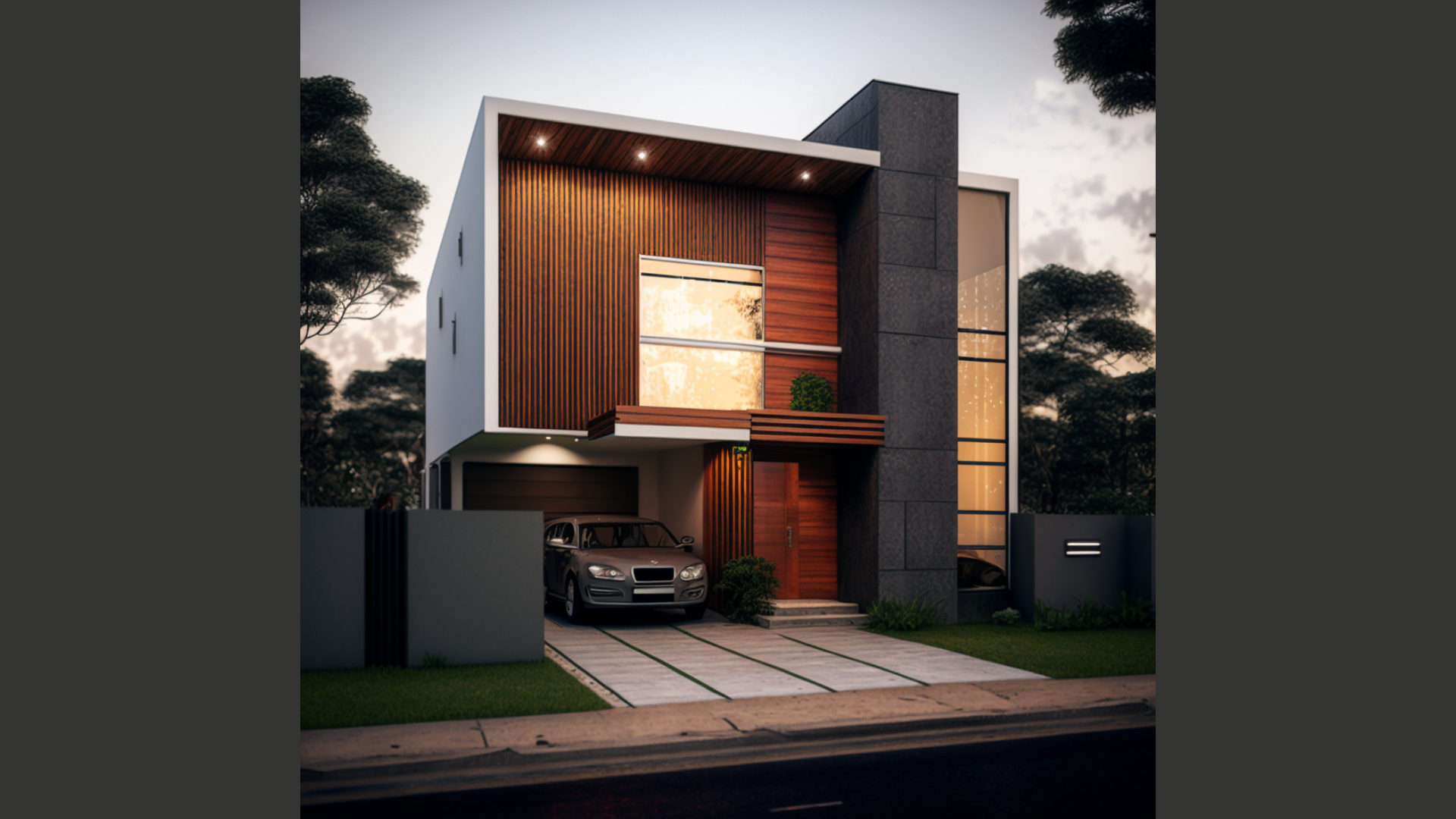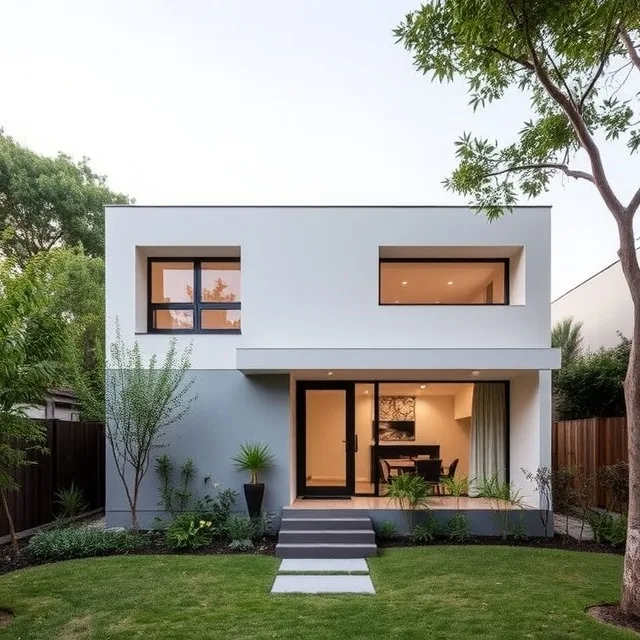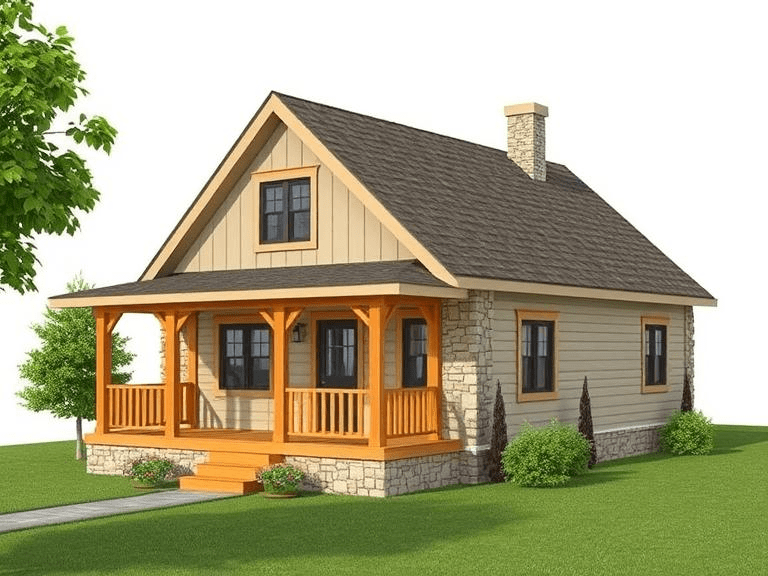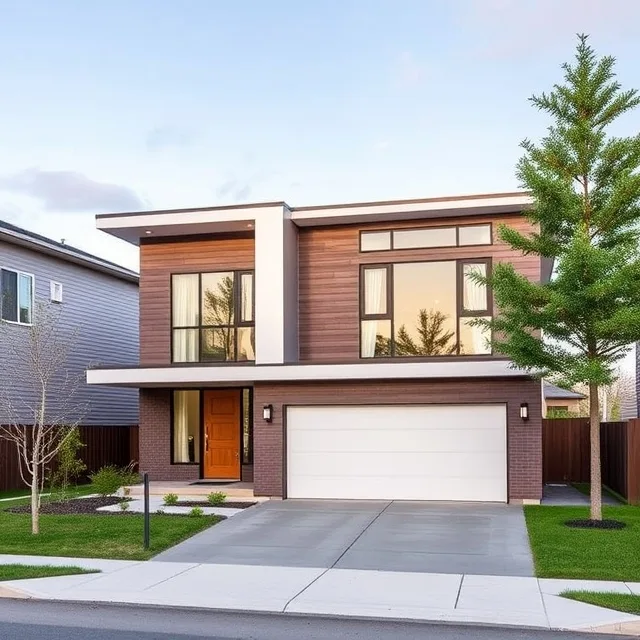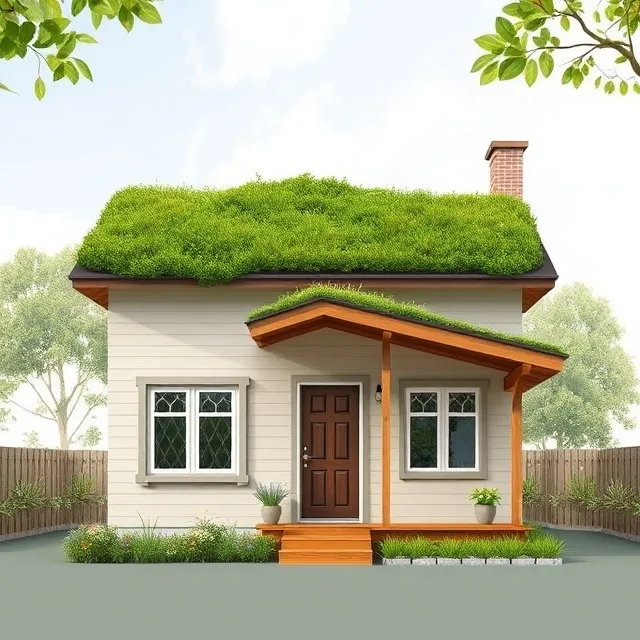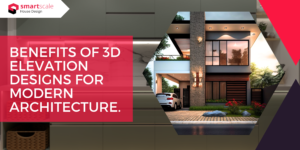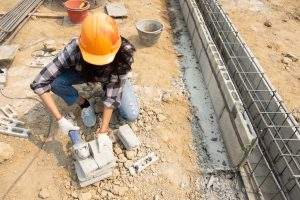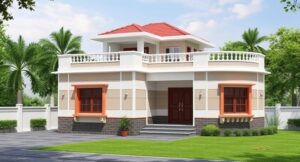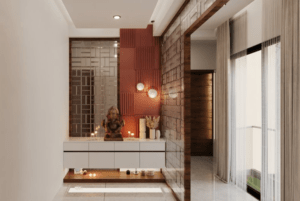Front elevation designs are essential for defining the overall look and feel of a house, especially for small homes where every detail counts. In this blog, we will explore various simple front elevation designs tailored specifically for small houses, highlighting how different design elements can enhance both aesthetics and functionality. Our focus will be on simple front elevation designs for small houses providing easy-to-understand descriptions and visual suggestions for five unique designs to inspire your next home project.
Simple Front Elevation Designs For Small Houses
Design 1: Modern Minimalist
This sleek design emphasizes simplicity and modernity, characterized by clean, straight lines and large windows that allow plenty of natural light to flood the interior. The use of glass, metal, and concrete gives the house a contemporary and minimalist look. Glass provides transparency and openness, making the space feel larger and more connected to the outdoors. Metal adds a touch of industrial chic, offering durability and a sleek finish. Concrete, known for its strength and versatility, forms the solid foundation and structure, contributing to the overall modern aesthetic. Together, these materials create a stylish and functional front elevation that stands out for its elegance and simplicity.
Design 2: Rustic Charm
This cozy design focuses on creating a warm and inviting atmosphere using natural materials and a soothing color palette. Wood, stone, and brick are the primary materials, each contributing to the overall charm and comfort of the house. Wood, with its rich textures and natural grains, adds warmth and a rustic feel, making the home feel welcoming and lived-in. Stone provides a sense of solidity and timelessness, often used for accents or structural elements like columns and facades. Brick, known for its durability and classic appeal, brings a touch of traditional elegance and can be used for walls or decorative features. Together, these materials create a harmonious blend that exudes coziness and character, perfect for a small house that feels like a true home.
Design 3: Contemporary Fusion
The Contemporary Fusion design seamlessly blends modern and traditional elements to create a unique and visually appealing front elevation. This design incorporates mixed materials such as wood, metal, and glass, each contributing distinct characteristics to the overall aesthetic.
Wood brings warmth and a touch of traditional charm, often used for accents like shutters, doors, or trim. Metal adds a sleek, modern edge, providing durability and a contemporary feel, commonly seen in railings, frames, or roofing. Glass, with its transparency and light-enhancing properties, bridges the gap between the indoors and outdoors, making spaces feel more open and connected.
By combining these materials, the Contemporary Fusion design achieves a balanced look that honors classic architectural elements while embracing modern design trends. This blend creates a harmonious and dynamic facade that stands out for its versatility and timeless appeal.
Design 4: Eco-Friendly Design
The Eco-Friendly Design prioritizes sustainability and environmental responsibility, using eco-friendly materials to create a harmonious and energy-efficient home. Recycled wood is a key component, offering the warmth and beauty of natural wood while reducing the demand for new timber and minimizing waste. Solar panels are integrated into the design to harness renewable energy from the sun, significantly lowering the home’s carbon footprint and reducing energy costs. Green roofs, covered with vegetation, provide excellent insulation, reduce stormwater runoff, and create a natural habitat for wildlife. Together, these materials not only contribute to a sustainable lifestyle but also enhance the aesthetic appeal of the house, making it a perfect choice for environmentally conscious homeowners.
Design 5: Classic Elegance
The Classic Elegance design embodies timeless beauty through its symmetrical features and use of classic materials. Brick, wood, and stone are the primary materials, each contributing to the design’s enduring appeal.
Brick, with its rich texture and durability, forms the foundation and main structure, offering a sense of solidity and tradition. Wood adds warmth and natural charm, often used for accents like shutters, doors, and trim, enhancing the home’s inviting feel. Stone, known for its strength and timelessness, is used for key architectural elements such as columns, facades, or pathways, adding a touch of elegance and grandeur.
Together, these materials create a harmonious and balanced design that exudes sophistication and grace. The symmetrical features, such as evenly spaced windows and a centered entrance, further enhance the sense of order and refinement, making this design a perfect choice for those who appreciate classic architectural beauty.
Why Front Elevation Design Matters
First Impressions
The front elevation of a house is the first thing people see, setting the tone for the entire home. It creates an initial impression that can influence how visitors and passersby perceive the house. A well-designed front elevation can convey a sense of style, warmth, and welcome, making a positive impact right from the start.
Aesthetic Appeal
The design of the front elevation plays a crucial role in enhancing the curb appeal of a house. Elements such as the choice of materials, color palette, and architectural details contribute to the overall visual attractiveness. A thoughtfully designed front elevation can make a small house stand out, adding character and charm that draw the eye and create a lasting impression.
Functionality
Good front elevation design is not just about looks; it also improves functionality. Features like well-placed windows can maximize natural light and ventilation, while thoughtful landscaping can enhance privacy and security. Additionally, the use of durable and low-maintenance materials can ensure the front elevation remains attractive and functional over time, reducing the need for frequent upkeep.
By considering these aspects, homeowners can create a front elevation that is not only beautiful but also practical and welcoming.
Conclusion
In this blog, we’ve explored the importance of front elevation designs for small houses, emphasizing how they set the tone for the entire home, enhance curb appeal, and improve functionality. We discussed key elements of simple front elevation designs, including minimalist approaches, natural materials, symmetry, lighting, and color palettes. Additionally, we presented five unique designs: Modern Minimalist, Rustic Charm, Contemporary Fusion, Eco-Friendly Design, and Classic Elegance, each with detailed descriptions and material suggestions.
We hope these ideas have inspired you to think creatively about your own home’s front elevation. For more innovative and beautiful designs, visit the SmartScale House Design. Explore our extensive collection of front elevation designs and find the perfect one to transform your small house into a stunning and functional home.

